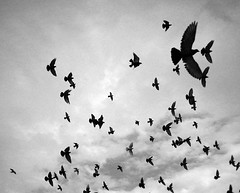Celebrate Nonfiction November with me! I gave this talk as part of the Mizzou Alumni Webinar Series (hello, pandemic adjustments…). In it, I discussed the practicalities of writing from life experience: how to start, what it means to embark on a book-length project, and how to take the first steps toward publication.
Thanks to Stephanie Anderson, the Mizzou Alumni Association, and the University of Missouri System Presidential Engagement Fellows Program for setting this up and hosting me.
About Me:
Julija Šukys is an award-winning author who works with emerging writers of nonfiction to help them craft literary texts from memory, experience, and research. Julija knows what it means to be driven to write a book, how to go about researching eclectic subjects, and what it takes to bring an ambitious writing project to fruition. For her, writing is a way of life: it’s how she understands the world around her, the means by which she survives it, and (as Joan Didion says) her way of finding out what she thinks, sees, and fears.
Julija is the author of three books, one book-length translation, and of more than two-dozen essays and articles. She is currently working on a project about university and college campus shootings that took place across the United States and Canada between 1966 and 2015.







